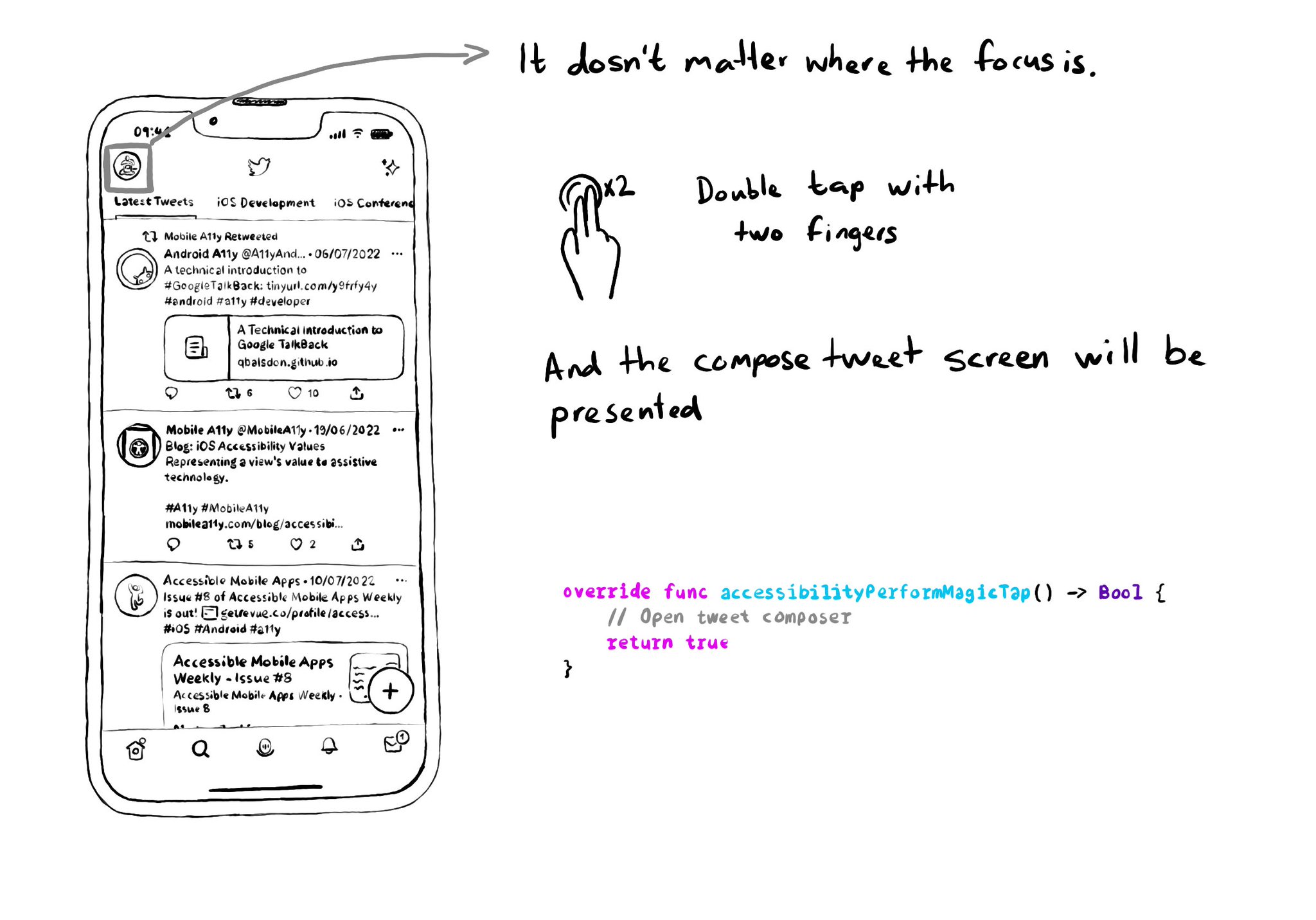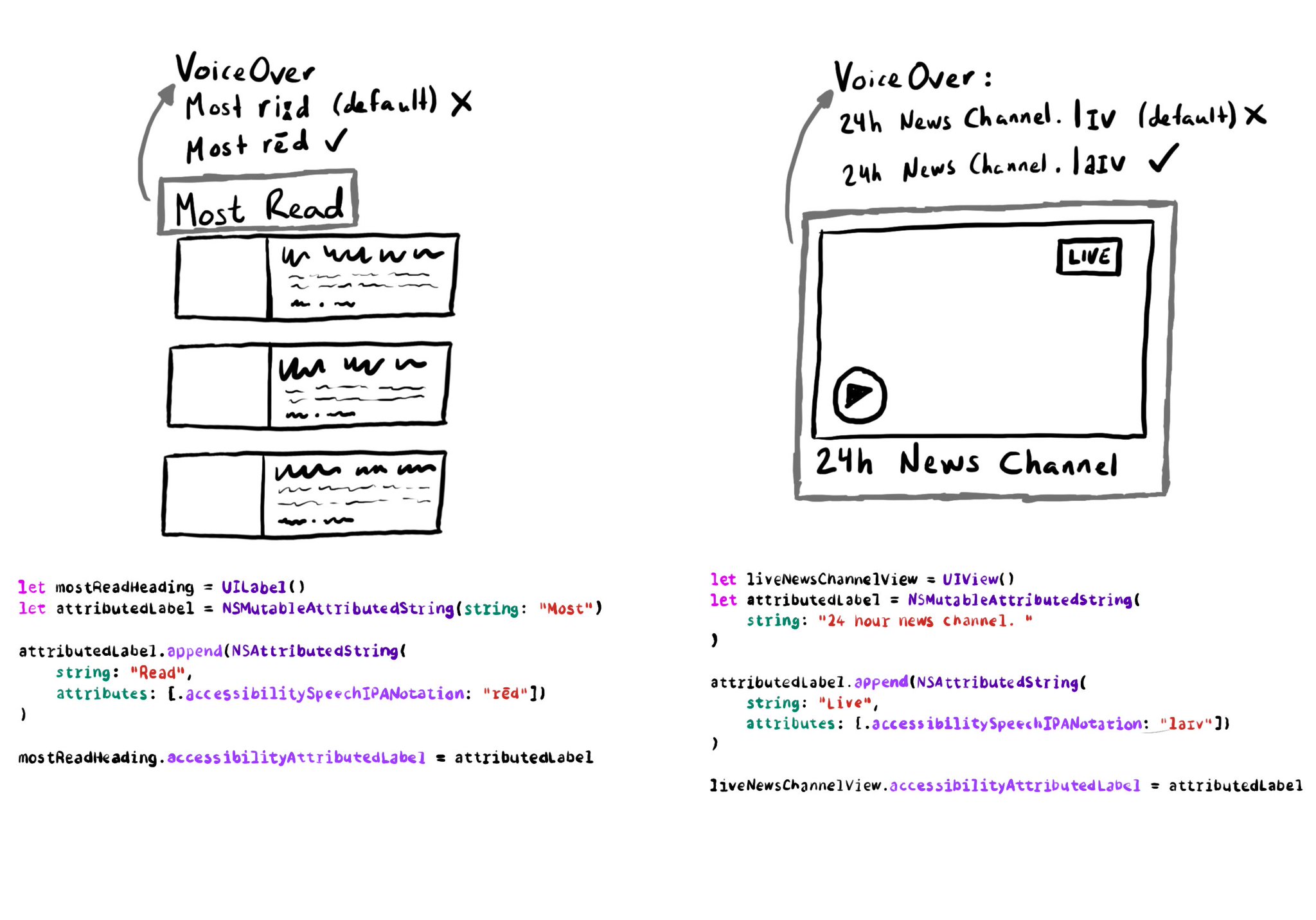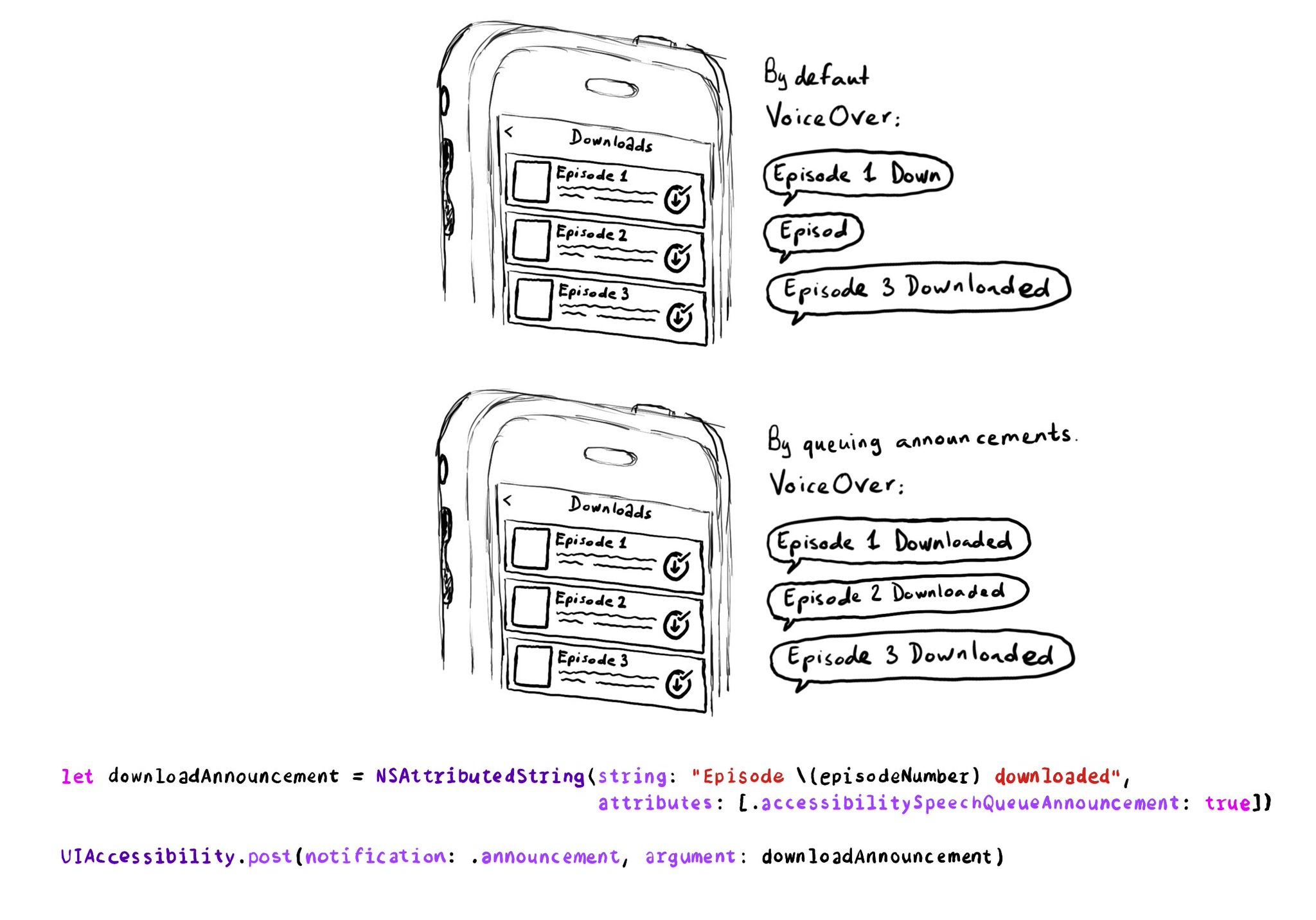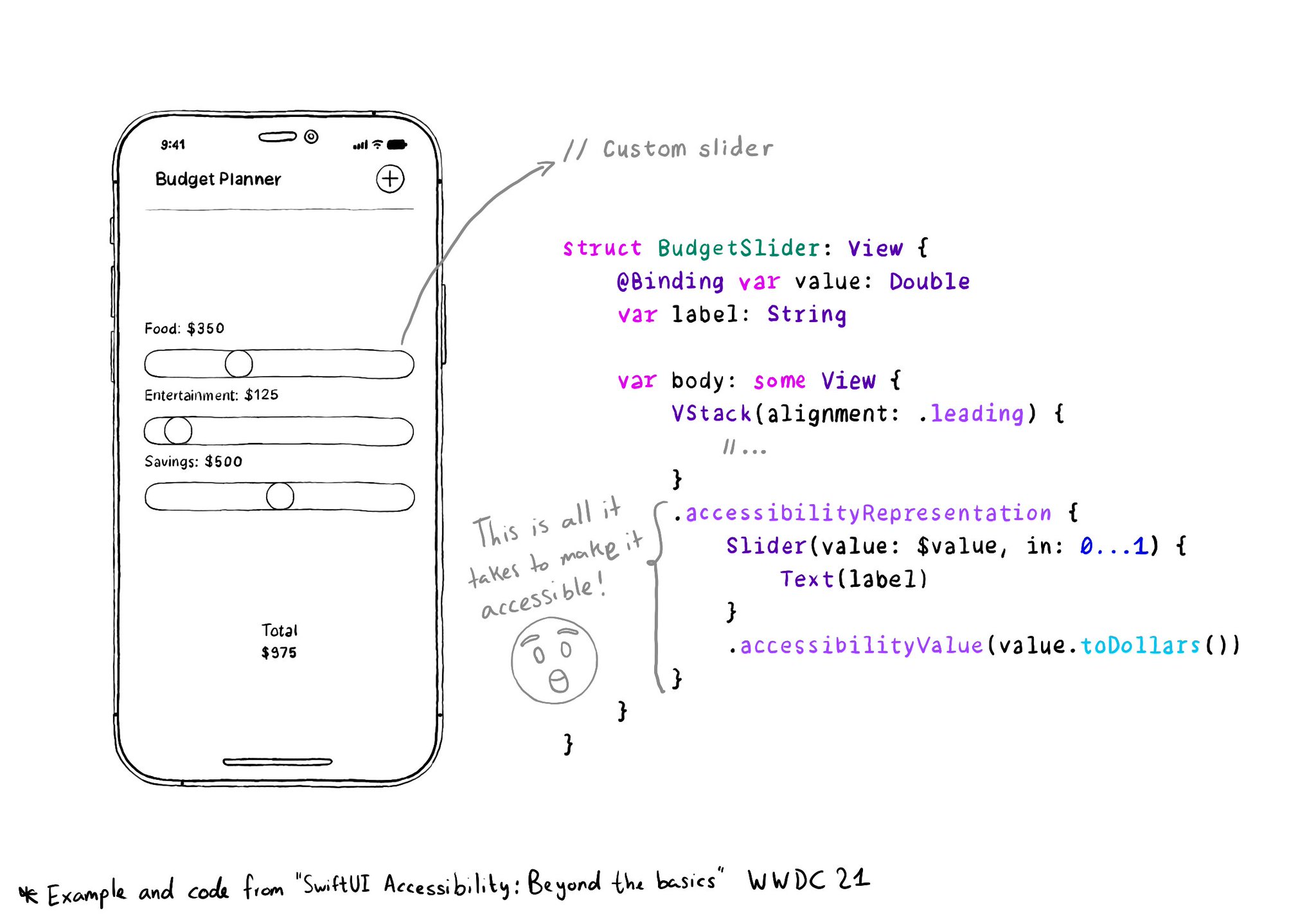VoiceOver has a very cool gesture called the Magic Tap (double tap with two fingers). It should execute the most important task for the current state of the app. Examples: start/stop timer, play/pause music, take a photo, compose a tweet...

You just need to override accessibilityPerformMagicTap() to capture that gesture, execute the desired code, and return true if handled successfully.
You may also find interesting...

accessibilitySpeechIPANotation is sometimes handy in English where a word is spelled the same but pronounced differently depending of the context. Some examples are: live, read... Or you may want to correct how VoiceOver pronounces your app's name! Example code in the image: ```swift let liveNewsChannelView = UIView() let attributedLabel = NSMutableAttributedString(string: "24 hour news channel. ") attributedLabel.append(NSAttributedString(string: "Live",attributes: [.accessibilitySpeechIPANotation: "laɪv"])) liveNewsChannelView.accessibilityAttributedLabel = attributedLabel ```

If you need to send announcement notifications that can step into each other, they will by default, interrupt ongoing announcements. But you can pass attributed strings as parameters too, letting you specify announcements to be queued.

With accessibilityRepresentation(representation:), you can create a custom component and it can be perceived by assistive technologies as the view you pass as representation. No need to manually configure accessibility attributes. It is one of the most interesting additions to SwiftUI to help you develop accessible UI components. If your custom component behaves similarly to a native one, this is the way to go. https://developer.apple.com/documentation/swiftui/view/accessibilityrepresentation(representation:)